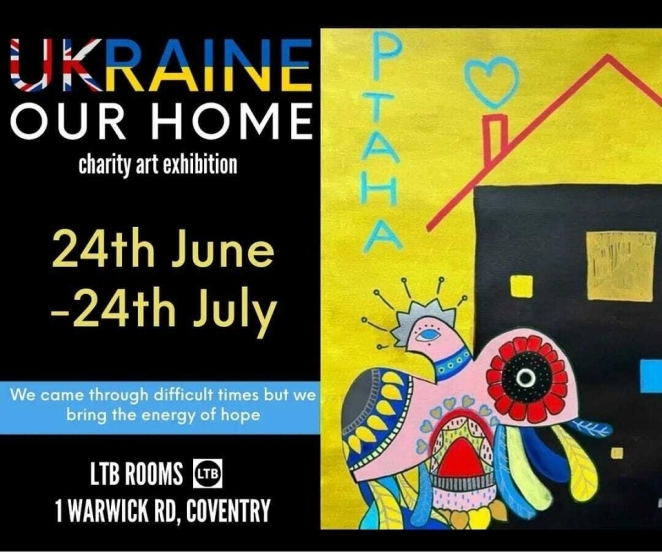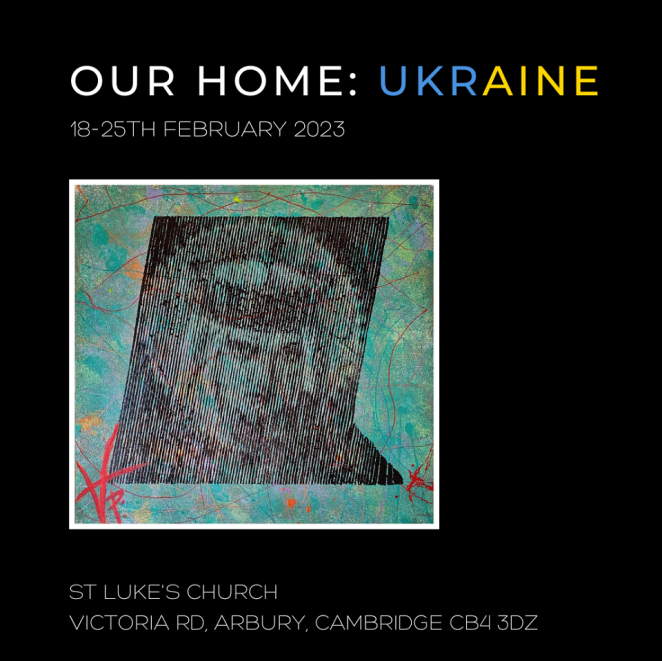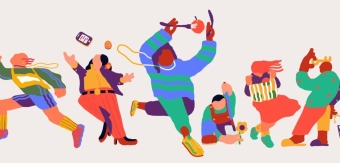How did you get into the industry?
My educational background includes a Bachelor's degree in Arts and Culture Studies (IBACS) from Erasmus University Rotterdam, Netherlands, which I completed between 2016 and 2019. Additionally, I earned a Master's degree in Curating and Collections at the University of the Arts London, Chelsea College of Art, from 2020 to 2021.
During my bachelor’s studies, I worked as a manager in a gallery, which allowed me to explore different facets of the art industry, from organizing exhibitions to handling logistics and interacting with artists and visitors. However, as my studies continued, I decided to shift my focus and pursue a career in curatorial practices.
So, since I moved to London and acquired a Global Talent Visa, I have been actively involved in curating shows and working with various contemporary artists. In addition to my curatorial practice, I am also an artist myself, and I have exhibited my works in several recent shows. In total, I have approximately 8 years of experience in the art industry now.
Where are you based now, and who do you work for?
I am originally from Ukraine but currently based in London. I work full-time in a gallery that specializes in original vintage posters, but my main focus is on my personal projects. I typically collaborate with various gallery spaces to exhibit the artworks of the artists I work with.
If you weren’t in your current industry, what would you be doing?
If I weren't involved in curating, I would dedicate myself solely to my personal artistic practice. But if I had to give up art altogether, I would probably work in the travel industry. I love traveling, and with my strong organizational skills, it would be interesting to organize and manage trips.
Can you explain your creative process? What makes it unique?
My creative process is shaped by the perspective I have as both an artist and a curator. This dual role allows me to approach the exhibition organization with an understanding of the artist's point of view.

Since I work with contemporary artists, I have the opportunity to consult with the authors of the works, and I always try to take into account their ideas about the exhibition, their wishes regarding their work, and not just my general concept of the exhibition.
As an artist, I understand how important this is. No one knows the artist's work better than the artists themselves, and of course, it is not always possible to take into account everyone's opinions, but I try.
How would you describe your style?
I think my main curatorial style is that I am not afraid to work with complex and sensitive topics. When I curate an exhibition, I want it to leave a strong impression on the visitors, not necessarily a positive one. I don't believe that art must necessarily be aesthetically beautiful, but it must evoke something in a person's soul, introduce something new, and provoke thought.
For example, in my main project of the last year, a series of Ukrainian anti-war exhibitions titled 'Our Home: Ukraine,' I wanted visitors to feel at least a fraction of what the authors of the works went through, even if it made them feel sad or uncomfortable. I witnessed people shedding tears several times at these exhibitions, which is precisely what I aim for - to deeply affect people, to stir something in their soul and mind.
Which individuals do you draw inspiration from?
Do you have any heroes in the industry? I am inspired by many figures in the art industry, such as Zoé Whitley, Victor Wang, RoseLee Goldberg, Polly Staple, Claire Bishop, Carolyn Christov-Bakargiev, Maria Lanko, Lizaveta German, and many more.
My most recent inspiration is Cecilia Alemani, an Italian curator and art critic, who curated the 'The Milk of Dreams' Venice Biennale in 2022. I had the opportunity to visit it last year, and I was deeply impressed by Alemani’s work, prompting me to delve further into her curatorial methods. She works extensively with emerging artists rather than well-established ones and aims to showcase innovative contemporary art, values that I also hold dear.

I also admire the entire teams of the (MOCA) Museum of Contemporary Art NGO, in partnership with Zaborona, The Naked Room, and Mystetskyi Arsenal, who established the Ukrainian Emergency Art Fund, providing support for cultural workers and artists in Ukraine and those who relocated abroad after the start of a full-scale war. They have created an incredibly important organization that assists thousands of Ukrainian cultural workers.
What tips would you give to aspiring creatives looking for work?
- Develop your network: Actively engage with other creatives, professionals, and potential clients. Attend events, openings, festivals, etc., join communities, participate in professional platforms. In this regard, education helps a lot, not necessarily academic, but even short courses or workshops from an art institute can help you connect with other creatives. In the art sphere, personal connections and recommendations are very important.
- Gain practical experience, even if it is unpaid: While it can be frustrating to work for free, and I believe that free internships should ideally be abolished, they do allow you to build a portfolio and gain experience that will be valuable when seeking a full-time job. Always remember to request references, which can be attached to your CV.
- Document everything you do: Keep detailed records of all your projects, contacts, and media coverage. Take photos and share them on your website or social media. This allows you to expand your portfolio, provide specific examples of your work when applying for a job, and establish credibility and visibility within the art industry.
What tips would you give to other professionals to attract more clients?
- Be authentic and unique: The art world is vast and diverse, with countless artists and curators. Being authentic helps you stand out and capture the attention of potential clients.
- Establish an online presence: Create a website, use social media, and maintain accounts on professional platforms, such as Creativepool. Potential clients need to be able to find you online, and your active online presence can make that happen.
- Expand your network: Attend events, strike up conversations, and offer your services or seek recommendations from people in your industry.
What kind of tools/kit/software could you not do without?
I can't imagine my work without Figma, a graphic editor that I use to create layouts and installation plans, design posters for my exhibitions, produce catalogs, and create presentations.

Its advantages include:
- It's free (up to two users and three projects per account), unlike many other design programs.
- It works on both Mac and PC.
- It allows real-time teamwork, enabling me to collaborate on projects with colleagues and edit them simultaneously.
- Files are stored in the cloud, accessible through a browser from anywhere, anytime. While an internet connection is required to start working, you can save the file locally, work on it, and sync it later.
What’s your secret to staying inspired and motivated?
To stay motivated, it is very important for me to understand why I am doing anything, especially when it comes to my personal projects. Of course, if I do something for my full-time job, despite the fact that I really like it, first of all, I do it for the sake of money. But when I take on some side project that I do in my free time, it is important for me to understand why I need to do this.
For example, with the Ukrainian exhibitions, my main goal was to spread the word about the war in my country and to help the artists who was left without a job in Ukraine or moved as a refugee to other countries. Then I understand that I am doing an important thing, and even if it was difficult and I was tired, it was worth it for me.
Therefore, if I am offered to participate in a project, but I understand that I am already very busy, and it will not bring me any new experience, I fight with FOMO (Fear of missing out) and refuse. I think it is very important to learn how to say “no” in order to avoid burnout and stay inspired and motivated.
What’s the work achievement you’re most proud of?
Of course, I am most proud of the series of exhibitions Our Home: Ukraine because it was a very large-scale project, many artists participated in it and we prepared it completely ourselves with my colleagues Alexandra Churakova and Alina Kostrichenko without any funding.
We were looking for places to exhibit and negotiated with galleries, went to Ukraine and brought the works from there, took them to where the exhibitions were held all over the UK and Germany, installed and deinstalled them, organized advertising and sales, etc.

To be honest, it was difficult both mentally and physically, but I am very proud of what we did and how many people we were able to help. And the nomination for Creativepool Annual Award with this project was an unexpected but very pleasant reward for these efforts.
What is the one thing that you would change about the industry?
I have already mentioned that I believe that free internships "for the sake of experience", which are so popular in the art industry should be banned. I understand that a young specialist needs to gain practice, but the experience will not pay rent and food bills, so I believe that any work must be paid. Otherwise, this leads to inequality, when only rich people who are supported by the family or have savings can afford to work in the arts.
Also, unfortunately, in the art industry, there is huge competition, which, in my opinion, hinders the development of creatives. And I would like to see more collaboration projects where people can work together, perhaps through open calls and funding from big institutions.
Any websites, books or resources you would recommend?
For anyone interested in art curating, I would recommend starting with Hans Ulrich Obrist’s books:
- "Ways of Curating" provides insights into the curatorial practice through a collection of interviews and essays. Obrist shares his experiences, ideas, and reflections on curating contemporary art.
- "A Brief History of Curating" traces the evolution of curatorial practices, exploring key moments and influential figures in the history of curating. It offers valuable perspectives on the development and challenges of the field.
For those who are interested in Ukrainian contemporary art and would like to understand it better, I recommend reading the book “In the Eye of the Storm: Modernism in Ukraine, 1900-1930s” by Katia Denysova, a PhD candidate at the Courtauld Institute of Art, London. Her research investigates the influence of socio-political factors on early 20th-century art in Ukraine.
This book explores a range of topics associated with art production in Ukraine, set against a complicated socio-political backdrop of collapsing empires, World War I, the revolutions of 1917 with the ensuing Ukrainian War of Independence, and the eventual creation of Soviet Ukraine. It also address the questions of national identity, imperial legacy and historical memory.





